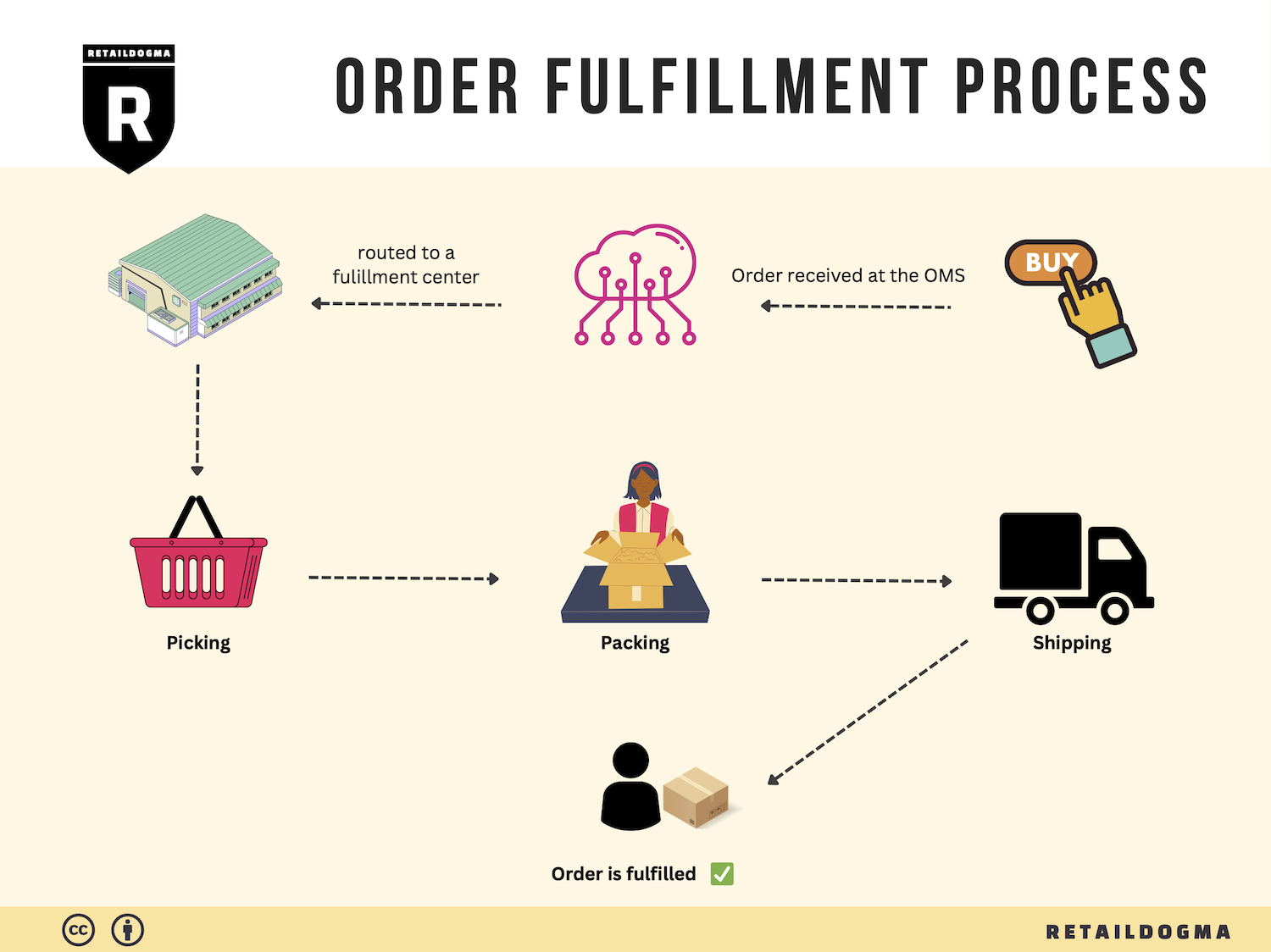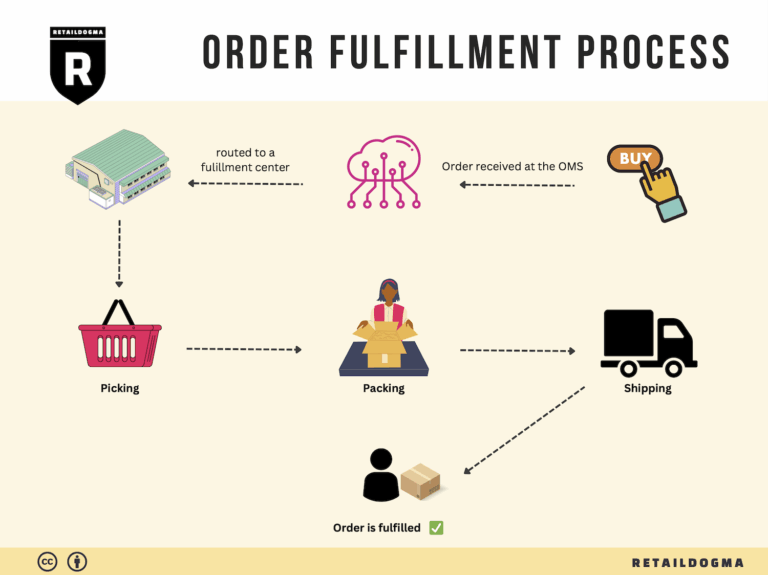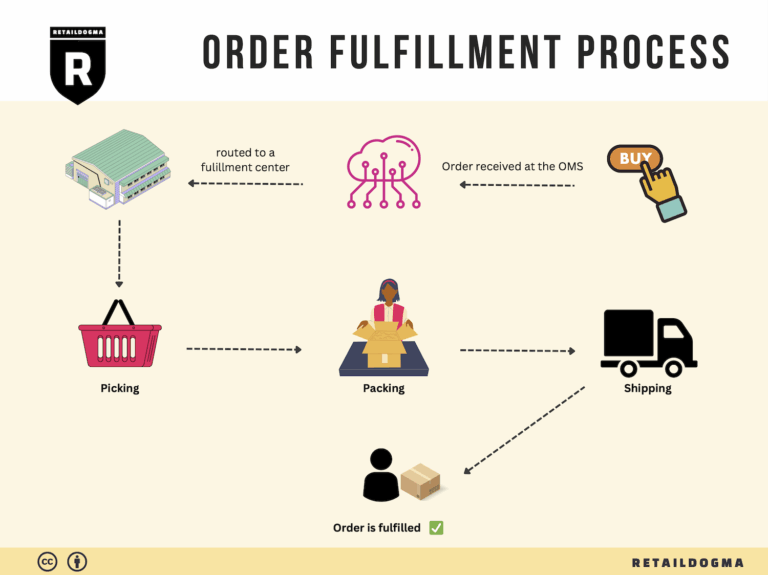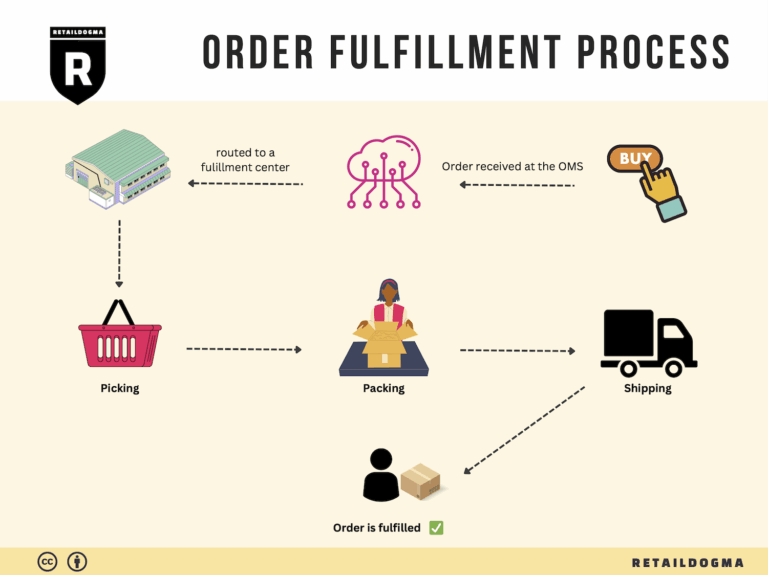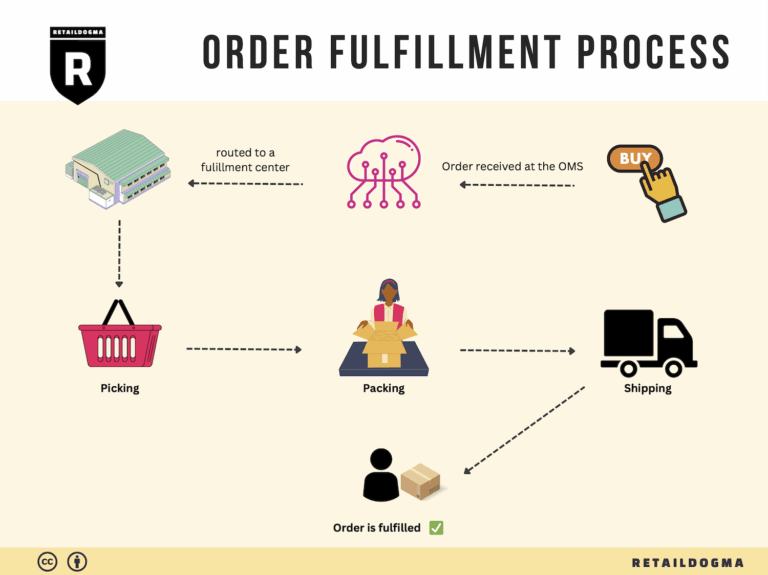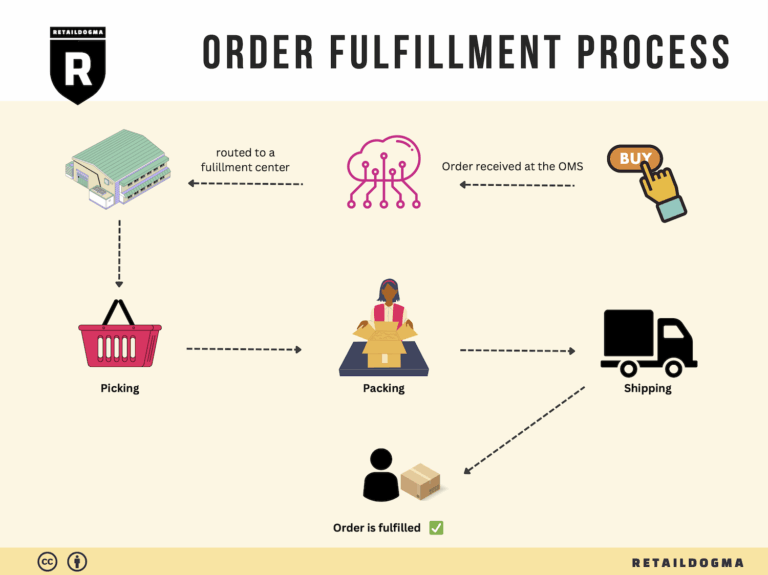Ecommerce Fulfillment Services: The Ultimate Guide (2025)
What is E-commerce Fulfillment? An Introduction for Growing Businesses
Understanding E-commerce Fulfillment
As an e-commerce business owner, you may find yourself grappling with the overwhelming task of packing and shipping orders. The excitement of growing your online store can quickly turn into stress as you navigate the complexities of logistics. This is where e-commerce fulfillment comes into play—a crucial yet often misunderstood aspect of online retail. Simply put, fulfillment is the process of getting a product from your inventory to your customer’s doorstep. It encompasses everything from order processing to shipping, and it’s vital for ensuring customer satisfaction and operational efficiency.
In this guide, we will explore the various fulfillment models available to growing businesses, including Third-Party Logistics (3PL) and Fulfilled by Amazon (FBA). Each model has its unique advantages and challenges, and understanding these options will help you determine the best fit for your business needs. We will also delve into the core services typically offered by fulfillment providers, such as inventory management, order tracking, and returns processing.
Choosing the right fulfillment partner is a critical decision for your business. We’ll provide insights on what to look for in a partner, including their experience in your industry, compliance with regulations (especially for sensitive products like dietary supplements), and their technological capabilities for seamless integration with your sales platforms.
Pricing is another key consideration in the fulfillment process. We will break down the cost structures associated with different fulfillment models, helping you understand how to budget effectively and avoid hidden fees.
Ultimately, this guide aims to empower you to make informed decisions about your logistics strategy. By understanding the intricacies of e-commerce fulfillment, you can streamline your operations, enhance customer satisfaction, and position your business for sustainable growth. Whether you’re just starting or looking to scale, the insights provided here will equip you with the knowledge needed to navigate the complexities of fulfillment in the e-commerce landscape.
What You’ll Learn In This Guide
- What is E-commerce Fulfillment? An Introduction for Growing Businesses
- The Order Fulfillment Process: From ‘Buy’ Button to Customer’s Door
- Comparing Fulfillment Models: In-House vs. 3PL vs. Dropshipping
- A Deep Dive into Amazon FBA: Pros, Cons, and Who It’s For
- Core Services Offered by Fulfillment Centers
- How to Choose a Fulfillment Partner: A 6-Point Checklist
- Understanding Fulfillment Pricing: A Breakdown of Common Fees
- Frequently Asked Questions (FAQs) about Fulfillment
- Conclusion: Is Outsourcing Fulfillment the Right Move for Your Business?
- Important Disclaimer
The Order Fulfillment Process: From ‘Buy’ Button to Customer’s Door
1. Receiving Inventory
The first step in the order fulfillment process is receiving inventory. When products arrive at your fulfillment center, it’s crucial to verify that the quantity and quality match your order specifications. This involves checking for discrepancies, damages, or defects. Each product is assigned a Stock Keeping Unit (SKU), which is a unique identifier that helps in tracking inventory throughout the fulfillment process.
Importance: Properly receiving inventory is essential for maintaining accurate stock levels and ensuring that you have the right products available to meet customer demand. If this step is overlooked, it can lead to stockouts or overstock situations, both of which can harm your sales and customer satisfaction.
Key Term: SKU (Stock Keeping Unit) – A unique identifier for each product that facilitates inventory tracking.
2. Warehouse Storage
Once the inventory is received and verified, the next step is to store the products in the warehouse. This involves organizing the products in a systematic manner, typically using a combination of shelving, bins, and pallets. Efficient storage solutions often utilize principles such as First-In-First-Out (FIFO) to ensure that older products are shipped before newer ones, which is especially important for perishable items like dietary supplements.
Importance: Effective warehouse storage minimizes the time spent locating products and reduces the risk of inventory damage. A well-organized warehouse can significantly enhance order accuracy and speed, directly impacting your ability to fulfill orders promptly.
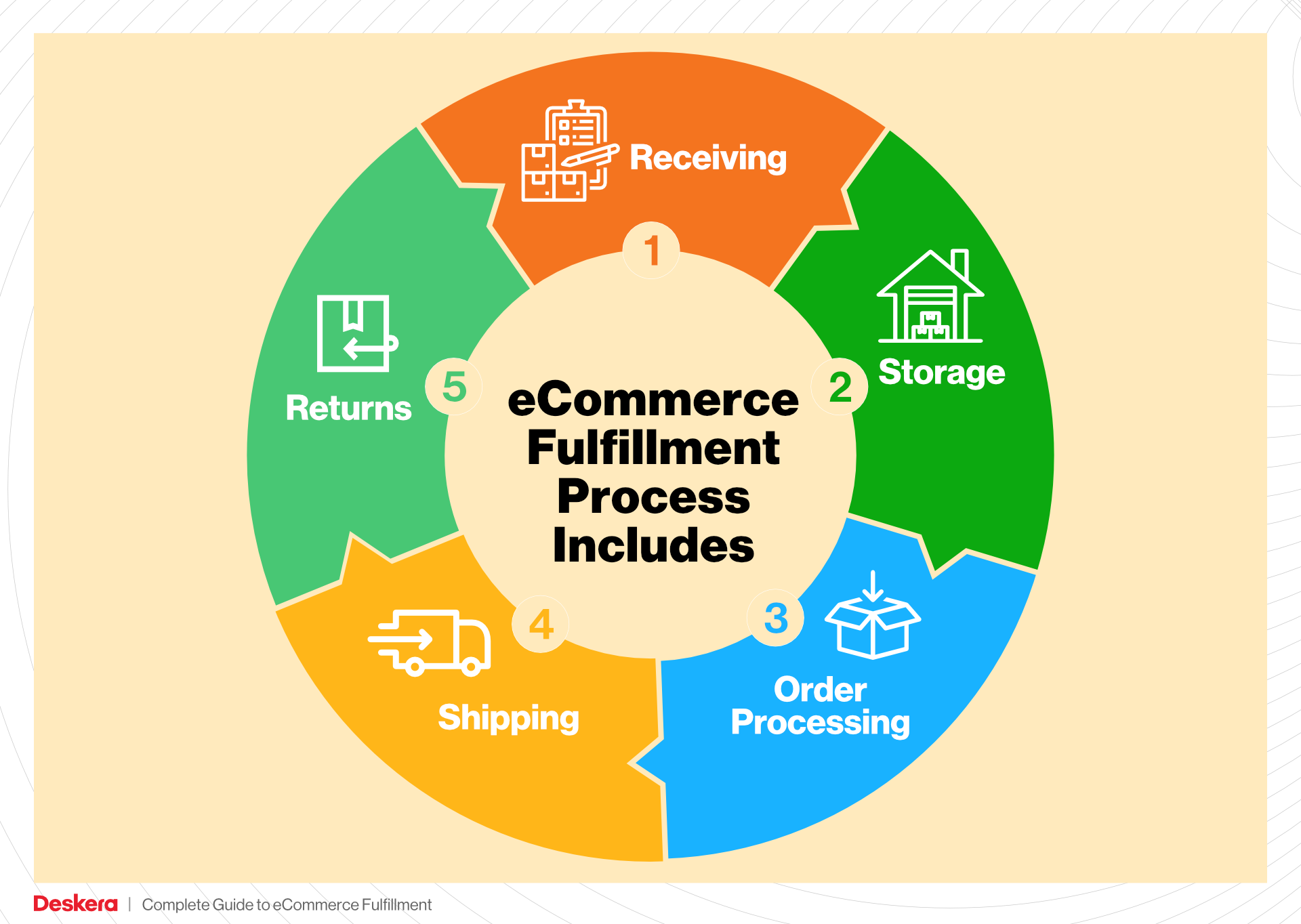
Key Term: FIFO (First-In-First-Out) – An inventory management method that ensures older stock is sold before newer stock to minimize waste.
3. Order Picking
After a customer places an order, the next step is order picking. This is where warehouse staff retrieve the specific items from storage based on the order details. A pick list, which outlines the items and quantities needed for each order, is generated to guide the picking process. This step can be done manually or with the help of automated systems, depending on the scale of operations.
Importance: Order picking is a critical phase that directly affects fulfillment speed and accuracy. Errors during this step can lead to incorrect shipments, resulting in customer dissatisfaction and increased return rates. Implementing efficient picking strategies, such as batch picking or zone picking, can enhance productivity.
Key Term: Pick List – A document or digital tool that details the items to be picked for fulfilling customer orders.
4. Order Packing
Once items are picked, they move to the packing stage. During this process, products are carefully packaged to ensure they arrive in perfect condition. This may include using protective materials like bubble wrap, packing peanuts, or custom-fit boxes. It’s also essential to include packing slips and any promotional materials.
Importance: Proper packing not only protects the products during transit but also enhances the unboxing experience for customers, which can positively influence brand perception. Additionally, efficient packing can reduce shipping costs by minimizing package size and weight.

Key Term: Packing Slip – A document included in the shipment that lists the items contained in the package, serving as a receipt for the customer.
5. Shipping & Delivery
The final step in the order fulfillment process is shipping and delivery. Once packages are packed, they are labeled and handed over to a carrier for transportation. This stage involves selecting the best shipping method based on factors like cost, delivery speed, and destination. Tracking information is often provided to customers so they can monitor their package’s journey.
Importance: Timely shipping is vital for customer satisfaction. Delays in delivery can lead to dissatisfaction and potential loss of future business. Moreover, offering multiple shipping options can cater to varying customer preferences, further enhancing the shopping experience.
Key Term: Tracking Information – A unique code provided by the carrier that allows customers to monitor the status and location of their shipment.
By understanding and optimizing each of these five steps—receiving inventory, warehouse storage, order picking, order packing, and shipping & delivery—e-commerce business owners can create a streamlined order fulfillment process that enhances customer satisfaction and drives growth.
Comparing Fulfillment Models: In-House vs. 3PL vs. Dropshipping
Fulfillment Model Comparison
| Model | Who Handles Inventory | Best For (Business Stage) | Key Advantage | Key Disadvantage |
|---|---|---|---|---|
| In-House Fulfillment | The Business | Established Businesses | Complete control over inventory and operations | High overhead costs and resource-intensive |
| Third-Party Logistics (3PL) | Third-Party Provider | Growing Businesses | Scalability and reduced operational burden | Less control over the fulfillment process |
| Dropshipping | Supplier | Startups / New Brands | Low upfront investment with minimal risk | Lower profit margins and reliance on supplier quality |
In-House Fulfillment
In-house fulfillment involves managing all aspects of storage, inventory management, and order processing within your own facilities. This model is often favored by established businesses with a stable product line and sufficient resources. The key advantage of in-house fulfillment is the level of control it affords over the entire logistics process, including inventory management, quality control, and customer service. Companies can tailor their fulfillment processes to their specific needs and respond quickly to changes in demand or product offerings.
However, this model also comes with significant downsides. The overhead costs can be substantial, given the need for warehouse space, staff, and equipment. Additionally, managing fulfillment in-house can be resource-intensive, pulling focus away from core business activities such as marketing and product development. For businesses looking to scale quickly, maintaining in-house fulfillment can become a bottleneck, as the company may struggle to keep up with increased order volumes without significant investment in infrastructure.
Third-Party Logistics (3PL)
Third-party logistics (3PL) providers specialize in handling the logistics and fulfillment operations for other businesses. This model is ideal for growing businesses that require scalability without the burden of managing their own fulfillment centers. A 3PL partner can manage everything from warehousing and inventory management to shipping and returns, allowing businesses to focus on their core competencies.
One of the main advantages of using a 3PL is the ability to scale operations quickly. As order volumes increase, businesses can leverage the 3PL’s infrastructure and expertise without needing to invest heavily in their own systems. Additionally, many 3PLs offer advanced technology and analytics that can enhance inventory visibility and order tracking. However, there are challenges to consider; businesses may have less control over the fulfillment process, which can lead to inconsistencies in service quality and customer experience. Furthermore, selecting the wrong 3PL can lead to misalignment in business goals and operational practices, potentially impacting customer satisfaction.
Dropshipping
Dropshipping is a fulfillment model where the retailer does not keep the products it sells in stock. Instead, when a retailer sells a product, it purchases the item from a third party, who then ships it directly to the customer. This model is particularly attractive for startups and new brands that lack the capital or resources to invest in inventory upfront. The low barrier to entry makes it a popular choice for entrepreneurs looking to test new products or markets without significant financial risk.
The primary advantage of dropshipping is the minimal upfront investment required. Retailers can focus on building their brand and marketing their products while the supplier handles inventory and shipping. However, dropshipping has notable drawbacks. Profit margins can be lower compared to other fulfillment models, as the retailer must pay wholesale prices to the supplier. Additionally, reliance on suppliers for inventory and shipping can lead to quality control issues and shipping delays, which can negatively affect customer satisfaction. Furthermore, competition can be fierce in the dropshipping space, making it challenging to differentiate one’s brand and products.
Conclusion
When choosing a fulfillment model, e-commerce business owners must consider their specific needs, resources, and long-term goals. In-house fulfillment offers control but at a higher cost and resource demand. 3PLs provide scalability and expertise but can introduce complexities in management and quality assurance. Dropshipping offers low-risk entry into the market but can lead to lower margins and quality concerns. Each model has its merits and drawbacks; the right choice will depend on the unique circumstances and growth aspirations of the business.
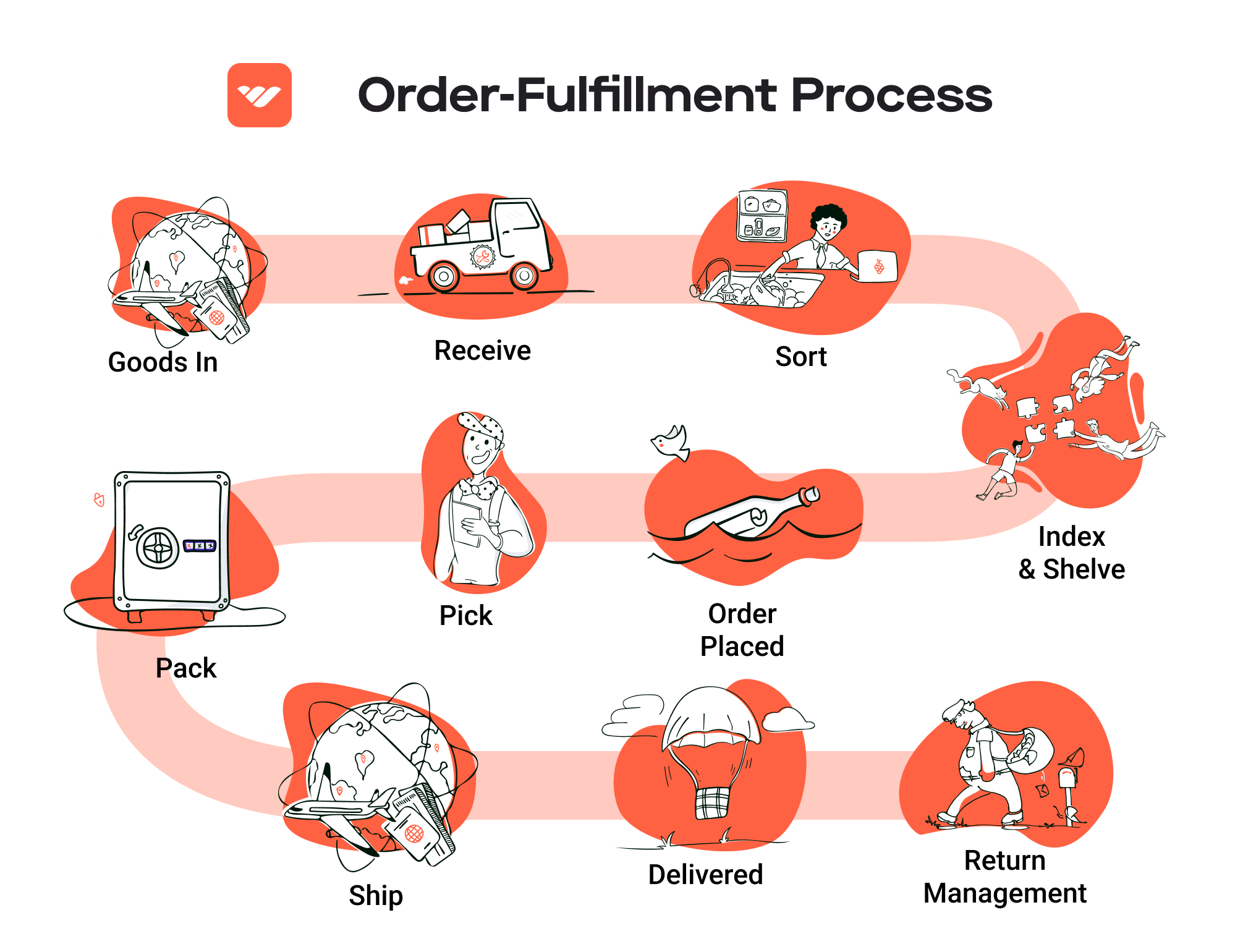
A Deep Dive into Amazon FBA: Pros, Cons, and Who It’s For
Understanding Fulfillment by Amazon (FBA)
Fulfillment by Amazon (FBA) is a service that allows e-commerce sellers to store their products in Amazon’s fulfillment centers. Amazon then takes care of storage, packaging, and shipping, as well as customer service and returns. This service is particularly appealing for businesses looking to scale their operations without the logistical challenges of managing warehousing and shipping themselves.
How FBA Works
-
Product Listing: Sellers list their products on Amazon and enroll them in the FBA program.
-
Shipping to Amazon: Sellers ship their inventory to Amazon’s fulfillment centers. Amazon provides guidelines on how to package and label products to ensure they are stored correctly.
-
Storage and Management: Once the products arrive, Amazon handles the storage, keeping track of inventory levels and ensuring that items are properly stored.
-
Order Fulfillment: When a customer places an order, Amazon picks, packs, and ships the product directly to the customer. This includes providing tracking information.
-
Customer Service: Amazon manages all customer inquiries and returns, allowing sellers to focus on other aspects of their business.
-
Payment: After the sale is completed, Amazon collects the payment from the customer and transfers the proceeds to the seller, minus applicable fees.
Pros of Using FBA
-
Prime Eligibility: Products fulfilled through FBA are eligible for Amazon Prime, which can significantly increase visibility and sales. Prime members often prefer to purchase items that qualify for free two-day shipping.
-
Customer Trust: Amazon has built a strong reputation for reliability and customer service. By using FBA, sellers can leverage this trust, as products fulfilled by Amazon are often perceived as more credible.
-
Multi-Channel Fulfillment: FBA isn’t limited to just Amazon sales. Sellers can use FBA to fulfill orders from their own websites or other sales channels, streamlining their logistics and inventory management.
-
Scalability: FBA allows businesses to scale quickly without the need to invest heavily in warehousing and logistics infrastructure. As demand grows, sellers can send additional inventory to Amazon’s fulfillment centers.
-
Time-Saving: With Amazon managing storage, packing, and shipping, sellers can focus on product development, marketing, and customer engagement rather than logistics.
Cons of Using FBA
-
High Fees: While FBA offers many advantages, it comes at a cost. Sellers must pay storage fees for their inventory and fulfillment fees for each order processed. These fees can add up, particularly for low-margin products.
-
Strict Inventory Rules: Amazon has specific policies regarding inventory management, including requirements for packaging, labeling, and storage. Sellers must adhere strictly to these guidelines, or they may face penalties.
-
Commingling Risks: In FBA, products from different sellers may be stored together. This can lead to issues if a seller’s product is damaged or if counterfeit products are mixed in. Sellers may receive returns of products that were not originally theirs, complicating inventory management.
-
Loss of Control: When using FBA, sellers relinquish control over the fulfillment process. This means they cannot directly manage shipping times or packaging quality, which can be a concern for brands focused on customer experience.
-
Limited Customization: Amazon’s fulfillment centers have standardized processes, which can limit sellers’ ability to customize packaging or include promotional materials in shipments.
Who is FBA Best For?
Fulfillment by Amazon is particularly well-suited for:
-
New Sellers: Entrepreneurs just starting their e-commerce journey can benefit from FBA’s infrastructure without needing significant upfront investment in logistics.
-
Brands with High Demand: Businesses with products that have proven demand can leverage FBA to scale quickly and effectively meet customer expectations.
-
Sellers with Limited Resources: Companies lacking the resources or expertise to manage their own logistics can find FBA a practical solution to manage fulfillment efficiently.
-
Multi-Channel Sellers: Brands that sell through various channels, including their own websites, can benefit from the streamlined logistics offered by FBA.
-
Businesses Focused on Growth: Companies looking to expand their reach into new markets without the headache of logistics can utilize FBA to facilitate growth.
In conclusion, Fulfillment by Amazon offers a robust solution for e-commerce sellers looking to simplify their logistics and enhance their customer reach. While there are notable challenges, the benefits of increased visibility, customer trust, and operational efficiency make FBA a compelling option for many businesses. As with any fulfillment strategy, it’s essential for sellers to weigh the pros and cons carefully and determine if FBA aligns with their business goals and operational capabilities.
Core Services Offered by Fulfillment Centers
Inventory Management & Warehousing
Inventory management and warehousing are foundational services provided by fulfillment centers that ensure your products are stored, tracked, and managed efficiently. Fulfillment centers utilize advanced inventory management systems that provide real-time data on stock levels, product availability, and order status. This capability allows e-commerce businesses to maintain optimal stock levels, preventing both overstock situations and stockouts.
Benefits:
1. Real-time Tracking: By integrating with your e-commerce platform, fulfillment centers offer real-time visibility into inventory levels, enabling you to make informed decisions about reordering and product promotions.
-
Space Optimization: Fulfillment centers are equipped with various storage solutions to maximize space utilization, including pallet racking and shelving systems. This optimization reduces your overhead costs associated with warehousing your products.
-
Scalability: As your business grows, fulfillment centers can easily scale their storage capacities to accommodate increasing inventory needs without requiring significant upfront investments from you.
-
Compliance and Safety: Many fulfillment centers, especially those specializing in dietary supplements, are FDA registered and adhere to Current Good Manufacturing Practices (CGMP). This compliance ensures that your products are stored in a safe environment, protecting your brand’s reputation.
Pick and Pack Services
Pick and pack services involve the process of selecting products from inventory and packaging them for shipment to customers. This service is crucial for e-commerce businesses as it directly impacts order accuracy and customer satisfaction.
Benefits:
1. Accuracy and Efficiency: Fulfillment centers employ sophisticated picking technologies, such as barcode scanning and automated systems, to ensure that orders are picked accurately and efficiently. This reduces the likelihood of errors that can lead to customer dissatisfaction and increased return rates.
-
Faster Order Fulfillment: With dedicated staff and streamlined processes, fulfillment centers can typically process orders much quicker than an in-house team. This speed is vital for meeting customer expectations, particularly for same-day or next-day delivery options.
-
Custom Packaging Options: Fulfillment centers often provide custom packaging solutions, allowing you to enhance your brand’s identity through branded boxes, inserts, or eco-friendly packaging materials. This adds value to the customer experience and can help differentiate your brand in a competitive market.
-
Order Scalability: During peak seasons, such as holidays, fulfillment centers have the capacity to handle increased order volumes without sacrificing quality or speed, ensuring that your business can meet customer demand.
Kitting and Assembly
Kitting and assembly services involve combining multiple products into a single package or creating customized product sets. This is particularly beneficial for e-commerce businesses that offer bundles, subscription boxes, or promotional kits.
Benefits:
1. Enhanced Customer Offering: By providing bundled products, you can increase the perceived value of your offerings, encouraging customers to purchase more items at once, which can lead to higher average order values.
-
Time Savings: Outsourcing kitting and assembly to fulfillment centers frees up your internal resources, allowing your team to focus on core business activities such as marketing, customer service, and product development.
-
Quality Control: Fulfillment centers often implement quality control checks during the kitting process to ensure that all components are included and meet quality standards. This reduces the risk of customer complaints and returns.
-
Flexibility: Whether you need seasonal kits, promotional offerings, or customized orders, fulfillment centers can adapt their kitting processes to meet your specific requirements, allowing for agile responses to market trends.
Returns Management (Reverse Logistics)
Returns management, or reverse logistics, is the process of handling product returns efficiently and effectively. This service is essential for e-commerce businesses, as returns can be a significant aspect of customer satisfaction and retention.
Benefits:
1. Streamlined Processes: Fulfillment centers implement structured processes for handling returns, including inspection, restocking, and processing refunds. This efficiency minimizes the operational burden on your business and enhances customer satisfaction.
-
Data Insights: Fulfillment centers can provide valuable data analytics on return reasons and trends, helping you identify potential issues with products or customer expectations. This insight can inform product development and marketing strategies.
-
Inventory Recovery: Effective returns management ensures that returned items are quickly assessed and restocked if possible, minimizing losses and helping maintain healthy inventory levels.
-
Customer Service Enhancement: A seamless returns process can significantly improve the customer experience, as customers appreciate hassle-free returns. This can lead to increased customer loyalty and repeat business, essential for long-term success.
By leveraging the core services offered by fulfillment centers, e-commerce businesses can optimize their operations, enhance customer satisfaction, and ultimately drive growth. Understanding and utilizing these services strategically can position your business to compete effectively in the ever-evolving marketplace.
How to Choose a Fulfillment Partner: A 6-Point Checklist
Location & Warehouse Network
Importance: The geographical location of your fulfillment partner’s warehouses can significantly impact shipping costs, delivery times, and ultimately customer satisfaction. A partner with a strategically located warehouse network can facilitate faster shipping to your customers, which is especially crucial in e-commerce.
Questions to Ask:
– Where are your warehouses located, and how many do you operate?
– How do you determine the best warehouse for order fulfillment?
– Do you offer a distributed network of warehouses to optimize shipping times?
– Can you accommodate international shipping if my business expands globally?
Technology & Integrations
Importance: The efficiency of your fulfillment operations heavily relies on the technology employed by your partner. A robust fulfillment partner should offer advanced technology solutions that integrate seamlessly with your e-commerce platform, providing real-time inventory management, order tracking, and data analytics.
Questions to Ask:
– What technology platform do you use for order management and inventory tracking?
– Can your system integrate with my existing e-commerce platforms (e.g., Shopify, WooCommerce)?
– Do you offer real-time updates on order status and inventory levels?
– How do you handle data security and compliance regarding customer information?
Specializations (e.g., Cold Storage, Oversized Items)
Importance: Depending on your product line, you may need a fulfillment partner with specialized capabilities. For instance, if you are selling dietary supplements, it is essential to ensure that your partner can handle compliance with FDA regulations and provide proper storage conditions. Similarly, if you deal with oversized items, ensure the partner has the necessary facilities and equipment.
Questions to Ask:
– What types of products do you specialize in fulfilling?
– Do you have temperature-controlled storage for sensitive products?
– Can you handle special packaging or kitting requirements?
– What certifications do you hold that validate your capabilities in handling specific product types?
Scalability & Capacity
Importance: As your business grows, your fulfillment partner should be able to scale operations accordingly. A partner that can handle fluctuating order volumes without compromising service quality is crucial for sustaining growth and customer satisfaction.
Questions to Ask:
– What is your capacity for handling seasonal spikes in order volume?
– How do you manage inventory during peak seasons?
– Can you provide case studies or references from clients you’ve helped scale?
– What processes do you have in place to ensure order accuracy during high-demand periods?
Pricing and Contracts
Importance: Understanding the pricing structure and contract terms is vital to avoid unexpected costs and ensure a sustainable partnership. Transparent pricing models will help you budget effectively and maintain profitability.
Questions to Ask:
– What is your pricing structure, and are there any hidden fees?
– Do you offer volume discounts or tiered pricing based on order frequency?
– What are the contract terms, and is there flexibility to adjust as my business changes?
– How do you handle returns, and what fees are associated with return processing?
Customer Support & Reviews
Importance: Excellent customer support is critical when issues arise. A responsive partner can resolve problems quickly, ensuring minimal disruption to your operations. Additionally, researching reviews and testimonials can provide insights into the partner’s reliability and service quality.
Questions to Ask:
– What customer support channels do you offer (e.g., phone, email, chat)?
– What are your average response and resolution times for support inquiries?
– Can you provide references or testimonials from current clients?
– How do you handle service disruptions, and what support is available during those times?
Conclusion
Choosing the right fulfillment partner is a pivotal decision that can greatly influence your e-commerce success, especially in the competitive dietary supplements market. By utilizing this checklist, you can ensure that you select a partner that aligns with your business needs and growth objectives. Consider these aspects carefully and ask the right questions to foster a successful and scalable partnership.
Understanding Fulfillment Pricing: A Breakdown of Common Fees
Initial Setup Fees
Initial setup fees are typically charged when you first engage a fulfillment service provider. These fees can cover the costs associated with integrating your systems with the fulfillment center, setting up inventory management systems, and customizing the fulfillment processes to suit your business needs.
Calculation: The fee can vary widely based on the complexity of your requirements but usually ranges from $500 to $2,000. Factors that influence this fee include the number of SKUs you plan to manage, the level of customization required for your operations, and the software integration needed to connect your e-commerce platform with the fulfillment center’s systems.
Receiving Fees
Receiving fees are charged for the process of receiving and inspecting your products upon arrival at the fulfillment center. This can include unloading, checking for damages, and entering the products into the inventory management system.
Calculation: These fees are often charged per pallet or box received, typically ranging from $20 to $50 per pallet. Some providers might also charge based on the volume of items received, particularly if they require extensive handling or inspection. Understanding how your supplier calculates these fees is crucial, as some may have minimum charges or tiered pricing based on volume.
Storage Fees (per pallet/bin)
Storage fees apply to the space your inventory occupies within the fulfillment center. This is an ongoing cost that can significantly impact your overall fulfillment expenses, especially if you have a large inventory or slow-moving products.
Calculation: Storage fees are generally calculated on a per-pallet or per-bin basis, with costs ranging from $15 to $50 per month per pallet. Some providers may charge based on cubic footage instead, which can vary depending on the dimensions of your products. It’s essential to clarify whether these fees are based on the actual space used or a minimum allocation, as this can affect your costs significantly.
Pick & Pack Fees (per item/order)
Pick and pack fees are charged for the labor involved in picking items from inventory and packing them for shipment. This is a critical aspect of fulfillment, as efficiency in this process can impact order accuracy and shipping times.
Calculation: These fees are typically charged per item picked and packed, with costs ranging from $1 to $5 per item, depending on the complexity of the order. Some fulfillment centers may also offer tiered pricing based on order volume, which can help reduce costs for businesses with higher order frequencies. Additionally, if your products require special packing materials or handling, this can increase your pick and pack fees.
Shipping Fees
Shipping fees encompass the costs associated with delivering your products to customers. These fees can vary based on several factors, including the shipping method chosen, the destination of the shipment, and the size and weight of the package.
Calculation: Shipping fees are typically calculated based on the shipping carrier’s rates, which can fluctuate based on the service level (e.g., standard, expedited) and the distance to the delivery location. Some fulfillment providers may offer discounted shipping rates due to volume agreements with carriers, while others may pass on the full cost to you. Understanding the shipping options available and the associated costs is essential for budgeting and pricing your products effectively.
Tips for Getting an Accurate Quote
-
Be Specific: Clearly outline your business needs, including the number of SKUs, average monthly order volume, and any special handling requirements. The more detailed your information, the more accurate the quote will be.
-
Request Itemized Pricing: Ask for a breakdown of all potential fees, including initial setup, receiving, storage, pick and pack, and shipping fees. This transparency will help you understand the total cost of fulfillment.
-
Compare Multiple Providers: Don’t settle for the first quote you receive. Compare offerings from multiple fulfillment centers to ensure you’re getting competitive rates and services that align with your business goals.
-
Consider Long-Term Costs: Look beyond initial costs and consider how fees may change as your business scales. A provider with a higher initial setup fee but lower ongoing costs may be more beneficial in the long run.
-
Negotiate: Many fulfillment providers are open to negotiation, especially if you can demonstrate potential for high volume or long-term partnership. Don’t hesitate to discuss your needs and seek better terms.
By understanding these common fees and how they are calculated, you can make informed decisions that help streamline your operations and enhance your profitability.
Frequently Asked Questions (FAQs) about Fulfillment
1. What is supplement fulfillment?
Supplement fulfillment refers to the process of receiving, processing, and delivering dietary supplements to customers. This includes inventory management, order processing, packaging, shipping, and handling returns, all tailored specifically for the dietary supplement industry. A successful fulfillment partner will ensure compliance with health regulations, maintain product integrity, and provide timely delivery.
2. How does supplement fulfillment differ from general fulfillment?
Supplement fulfillment is specialized and focuses on the unique requirements of dietary supplements, such as compliance with FDA regulations, tracking lot numbers and expiration dates, and ensuring the safety of consumable products. General fulfillment may not have the same level of expertise in handling health-related products and regulatory compliance.
3. What is a 3PL (Third-Party Logistics) provider?
A 3PL provider is a company that offers outsourced logistics services, including storage, fulfillment, and distribution. For supplement businesses, a 3PL can handle the complexities of inventory management, shipping, and compliance, allowing business owners to focus on product development and marketing rather than logistical challenges.
4. How much do fulfillment services cost?
Fulfillment service costs can vary widely based on factors such as order volume, storage space, and specific services required (like kitting or custom packaging). Generally, businesses can expect to pay a combination of per-order fees, monthly storage fees, and additional charges for value-added services. It’s essential to get quotes from multiple providers to find the best fit for your needs.
5. What should I look for in a supplement fulfillment partner?
When choosing a fulfillment partner, consider their experience in the dietary supplement industry, compliance with FDA regulations, technology for real-time tracking, inventory management capabilities, customer service quality, and the ability to scale with your business. It’s also critical to assess their facility standards, such as whether they are FDA registered and adhere to Good Manufacturing Practices (GMP).
6. How can I ensure compliance with FDA regulations in my fulfillment process?
To ensure compliance, partner with a fulfillment provider that is FDA registered and knowledgeable about dietary supplement regulations. They should perform regular audits, maintain proper documentation, and have quality control measures in place. Additionally, staying informed about regulatory changes is crucial for ongoing compliance.
7. What is the difference between a warehouse and a fulfillment center?
A warehouse is primarily used for storing goods, while a fulfillment center focuses on the entire process of order fulfillment, including picking, packing, and shipping products directly to customers. Fulfillment centers are equipped with technology and processes designed to handle high volumes of orders efficiently.
8. How do I manage inventory effectively in supplement fulfillment?
Effective inventory management can be achieved by implementing real-time tracking systems, utilizing software that integrates with your e-commerce platform, and regularly analyzing sales data for forecasting. Establishing reorder points and maintaining proper stock levels is essential to prevent stockouts or excess inventory.
9. Can I customize my packaging and branding with fulfillment services?
Yes, many fulfillment providers offer customizable packaging options that allow you to enhance your brand identity. This can include custom labels, branded boxes, and even special inserts. Discuss your branding needs with your fulfillment partner to ensure they can accommodate your requirements.
10. What are the benefits of using a fulfillment service for my supplement business?
Using a fulfillment service can streamline operations, reduce overhead costs, and improve customer satisfaction through timely deliveries. It allows you to focus on core business activities like marketing and product development while leveraging the expertise and resources of a specialized fulfillment partner to handle logistics effectively.
Conclusion: Is Outsourcing Fulfillment the Right Move for Your Business?
Evaluating the Benefits of Outsourcing Fulfillment
Outsourcing your fulfillment process can be a transformative decision for your e-commerce business, particularly in the competitive dietary supplements market. By partnering with a dedicated fulfillment service, you can save valuable time that can be redirected towards strategic initiatives such as marketing and product development. This efficiency allows you to focus on scaling your business rather than getting bogged down by logistics.
One of the primary advantages of working with a fulfillment partner is scalability. As your sales grow, a capable fulfillment provider can seamlessly adapt to increased order volumes, ensuring that customer expectations are consistently met. This flexibility is crucial in a sector where consumer demand can fluctuate significantly. Furthermore, partnering with experts in fulfillment means tapping into their industry knowledge and best practices. These specialists understand the nuances of dietary supplement regulations and compliance, which can mitigate the risks associated with product safety and legal liabilities.
However, the success of your outsourcing strategy heavily relies on selecting the right fulfillment partner. It’s essential to choose a company that not only aligns with your business goals but also possesses the necessary certifications and infrastructure to support your specific needs. Look for partners with a proven track record, such as those with FDA registration and experience in the dietary supplements space.
Take Action: Assess Your Current Fulfillment Process
If you’re contemplating whether outsourcing fulfillment is the right move for your business, start by auditing your current shipping and logistics processes. Identify bottlenecks, inefficiencies, and areas where you could benefit from external expertise. This analysis will provide clarity on whether engaging a fulfillment partner could enhance your operational capabilities and drive growth. Don’t hesitate to reach out to potential partners to discuss how they can tailor their services to support your unique business model. Your next step could be the catalyst for significant growth in your e-commerce journey.
Important Disclaimer
⚠️ Important Disclaimer
The information in this guide is for educational purposes. Fulfillment services, pricing, and platform features change frequently. Always conduct your own due diligence and consult with providers directly before making business decisions.
